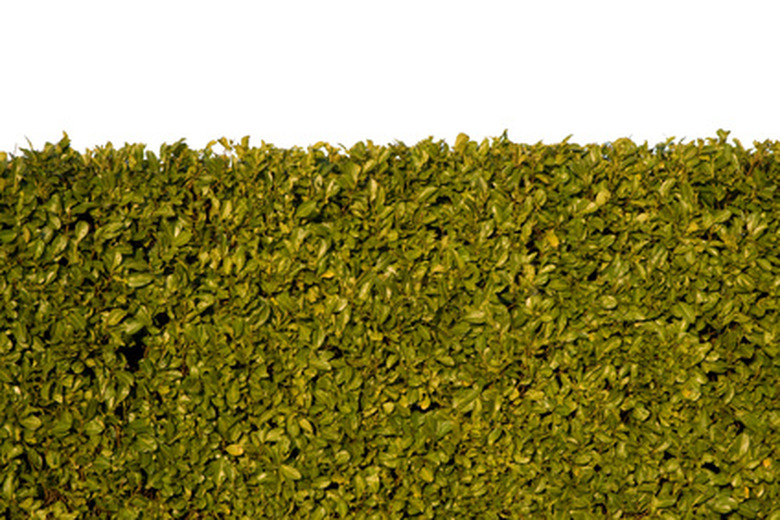How To Make A Ficus Hedge
Things Needed
- Container-grown ficus plants
- Measuring tape
- Stales
- Cord
- Shovel
- Hand cultivator
- Garden hose
- Pruning shears
- Hedge clippers
Ficus benjamina, or weeping fig, is a very large, rapidly growing tree that is often used to form tall privacy screens or hedges in tropical and subtropical climates. It does well in full sun or shade and is not particular about the soil as long as it is well drained. It thrives on very little so there is usually no need to fertilize.
Step 1
Measure the length of the desired hedge and determine the number of plants needed. To form a hedge, ficus plants are spaced 2 to 2 1/2 feet apart. A 50-foot-long hedge will require 20 to 25 plants. The width of a mature ficus hedge will be between 3 and 4 feet.
- Ficus benjamina, or weeping fig, is a very large, rapidly growing tree that is often used to form tall privacy screens or hedges in tropical and subtropical climates.
- The width of a mature ficus hedge will be between 3 and 4 feet.
Step 2
Purchase young container-grown plants at a garden center. The plants should be between 1 and 2 1/2 feet in height.
Step 3
Mark off the hedge line by stretching a length of cord between two stakes, about six inches above the surface of the soil and about one foot in front of the center of the hedge line. Mark a spot 2 feet from the first stake along the cord. This will be the location of the first plant.
Step 4
Lay out the plants evenly one foot behind the cord. Step back and check the line of the plants and make any necessary adjustments to the spacing.
- Purchase young container-grown plants at a garden center.
- Lay out the plants evenly one foot behind the cord.
Step 5
Mark the spot where the first plant sits and remove it to dig the planting hole. The planting hole should be slightly wider than the root ball and deep enough to allow the plant to sit at the same level as it did in the container. Slide the plant out of the container and place it in the planting hole; back fill around the roots. If the roots are wound tightly, loosen them with the hand cultivator. Repeat this process until all the plants are planted.
Step 6
Water the newly planted hedge deeply to settle the soil around the roots. You will also need to water the hedge every day for the next two weeks or as needed. The soil should be kept moist but not soggy.
- Mark the spot where the first plant sits and remove it to dig the planting hole.
- The planting hole should be slightly wider than the root ball and deep enough to allow the plant to sit at the same level as it did in the container.
Step 7
Trim back the top of the plants lightly with the pruning shears to compensate for any loss of roots during the planting process. Once the hedge has grown about eight inches, lightly clip the top. This will force the plants to bush out. Continue lightly clipping the top and sides as the plants grow. Ficus plants are vigorous growers, and a mature hedge will need to be clipped monthly to keep it in bounds.
Warning
The roots of most ficus plants are invasive and have been known to damage septic systems, sidewalks, patios and building foundations. Many plants are also susceptible to whiteflies. A ficus hedge must be clipped monthly to maintain a good appearance and size. You may want to consider the Surinam cherry as a substitute hedge plant.
